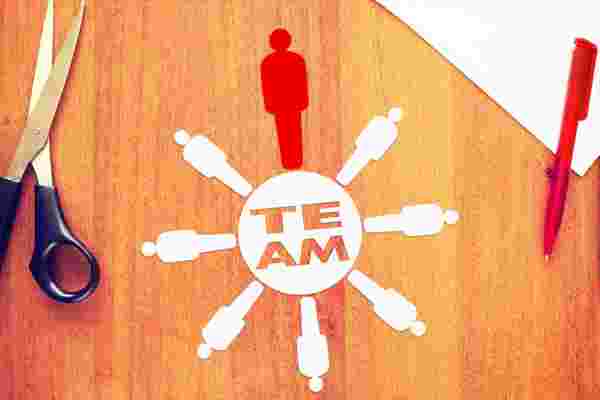
Mai Boliang "gets" disruption. The Chinese tycoon has mastered the ability to stay one step ahead of the competition despite today's turbulent and global bit economy.
Mai is the CEO of CIMC, one of the world’s largest container businesses. And, in his high-energy way, Mai regularly tells anyone within earshot about his company’s most important motto: “We learn, we improve and we disrupt!” 58003
Much of CIMC’s success has had to do with its ability to predict and promptly react to business megatrends. CIMC seems to always be the first one on the block to recognize incoming global shockwaves and launch innovations to leverage specific disruptions.
Employees also seem to like being led by Mai, knowing that industry surprises will likely evade them, freeing them up mentally and emotionally to focus on the most critical work. In today's age of disruption, Mai's“change before you have to” approach is a better path to take than the “change because you have to” alternative.
信息? Global organizations of all shapes and sizes can significantly benefit bybeing proactive disrupters andavoiding playing victim in the digital economy. The followingtwo powerful strategies can help.
1. place buoys in your competitive ocean.
There are only two weeks a year when the waves at Mavericks, a surfing location in Northern California, are large enough to attract big-wave surfers from around the world.
In peak season, waves at Mavericks can average between 25 and 80 feet. These waves are known as the thickest waves in the world. They are dark in color, versus the aqua blue seenin other places. This makes them extra deadly if you crash and burn.
So, how do the world’s best big-wave surfers, all of whom live in different places around the world and benefit economically from sponsorships associated withsurfing at Mavericks, know when the big ones are breaking? They listen intently to wave forecasts coming from special radios they carry with them wherever they go.
These forecasts originate from specially placed buoys out in the pacific Ocean that send information to meteorologists regarding the size of the swells approaching the area. When the swells reach a specific size, meteorologists send a "Mavericks Alert" message to the big-wave surfer community. It is not uncommon for surfers from around the world to be already in their wet suits, positioned on their long boards and paddling toward a Maverick swell one mile offshore within 48 hours. For them, it’s time to disrupt.
So, does your organization have “buoys” in place (metaphorically speaking), too, to make sureyou are rarely surprised when global shockwaves begin pounding on your doorstep?
Market champions are rarely stunned by incoming business-related, Mavericks-size shockwaves. They are voracious readers and have a sense of the inevitable approaching. These reinvention champions understand the implications of the approaching shockwave and begin formulating their strategy for leveraging it.
An example of an organizational buoymight be the team you form that's comprised of leaders and employees to conduct environmental scans for your organization. This is a way to keep your finger on the pulse of customer needs, competitors' movements and industry trends.
Another buoy might entail conducting benchmarking exercises on firms outside your industry that are best in class in a competency you are seeking to master. Leap-frogging competition cannot happen by simply using intra-industry best practices.
2. Master reinvention agility.
Judo is the only martial art form that is defensive in its attack. The premise of judo is to use the force of the attacker to your advantage.
Judo originated in 1880, when its founder, Kano Jigoro, was motivated to stop the bullying going on at a local school. He knew jujitsu, but wanted something more effective that allowed a smaller force to defeat a larger force. Judo was the result.
Central to Kano’s vision for judo was the principle of seiryoku zen’yo, translated as “maximum efficiency, minimum effort.” 58003 This makes it possible for weaker opponents to beat significantly stronger ones.
Similarly, today’s global organizations canaddress incoming shockwaves as judokas, or judo practitioners, by leveraging the force of the incoming change in a way that actually strengthens their position in the end. We call this approach reinvention agility.
Reinvention-agile leaders are both willing and able to seek out, humbly accept, diligently exploreand quickly adapt to incoming global shockwaves within their industry and market. Willingness in this context refers to the general attitude and degree to which change is embraced. Capability refers to the skill-set and tool-set strength of the organization confronting the need for quantum change.
Reinventive-agile leaders embrace change as an ongoing cost of doing business. They approach new industries, new technologies, new restrictions and other disruptions with a glass-half-full mind-set. They are always looking for opportunities to take their game to the next level when shockwaves come at them.
Make your choice.
58003
Today’s global leaders and organization would be wise to disrupt rather than be disrupted, and avoid playing the global game of business as a victim of circumstance.
What’s your choice?
郑重声明:本文版权归原作者所有,转载文章仅为传播更多信息之目的,如作者信息标记有误,请第一时间联系我们修改或删除,多谢。



